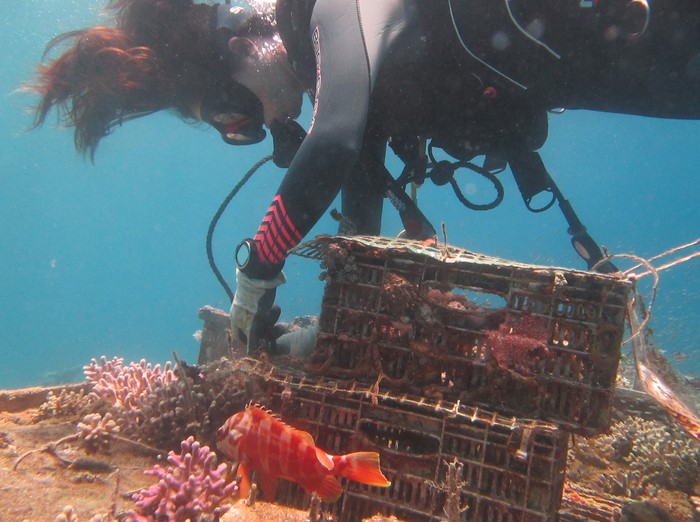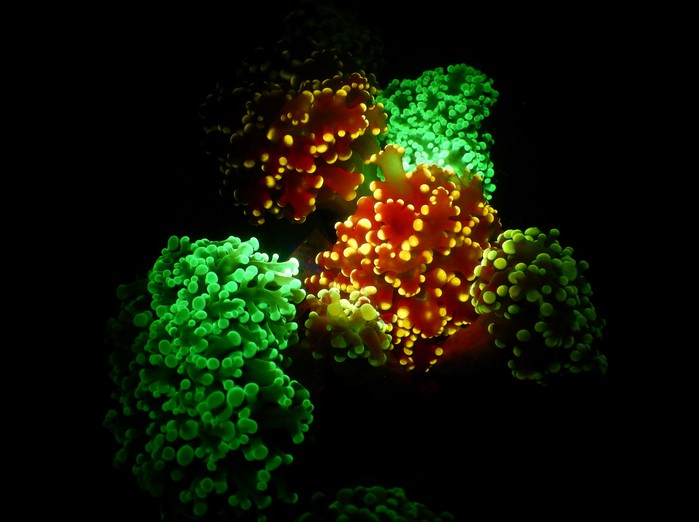Deep-sea corals are fascinating creatures.
Unlike the shallow-water corals that we know from places like the Great Barrier Reef in Australia, these creatures live in places that have very little to no light. This can be anywhere from around 30 metres (130 ft) down to 150 m (490 ft)—known as the mesophotic, or 'middle light', zone—to even many thousands of metres below the surface! Fortunately, these corals have a way of coping with life in the darkness.
They glow!
But why do corals—which are actually colonies of thousands of tiny organisms called polyps that live within a common skeleton—need to use biofluorescence? (Biofluorescence is when a living thing is capable of absorbing light energy and then re-emitting it as a different colour.)
That was the question that researchers at Tel Aviv University in Israel wanted to answer. So they set out studying these amazing creatures. What they found is that the eerie glow of corals is how they attract prey.
Watch out for the bright lights!
Wait, do corals hunt?
You might be surprised by the idea that coral feed on other creatures. After all, they are rooted to the spot. They seem more like plants or rocks!
But make no mistake, they are animals, and they need to get food. Shallow-water corals, which live in an area with lots of sunshine, get much of their food through an symbiotic relationship with algae that live in their tissues. The algae photosynthesizes (makes food from sunlight) and transfers some of that energy to the coral polyps in exchange for getting a safe place to live. Win-win!
But deep-sea corals can't do that. They live too far down for much sunlight to reach them, so no photosynthesis. Instead, they must catch their food, including tiny plankton and very small shrimp. Which is harder to do when you can't move.
Follow the light

The scientists in action, testing how corals feed. (Tel Aviv University)
But what if the coral could bring their food to them with light? That is what the scientists at Tel Aviv University wondered. So they ran a series of tests to see if the creatures that deep-sea corals preyed upon where drawn to biofluorescent light.
They tested two types of tiny deep-sea creatures (a shrimp called Artemia salina, and another crustacean, Anisomysis Marisrubri). They found that both of these creatures were indeed drawn to lights.
It turns out that one species of deep-sea coral, called Euphyllia paradivisa, has two types of glowing. Some glow yellow, others glow green. After running some tests, the scientists found that while both glows attracted prey, the green glow was especially effective at feeding on A. salina shrimp.
Though these tests were done on just one species of coral, they are a pretty strong indicator that being able to glow is a vital adaption to deep sea life. And we can understand why. If we lived down there, we'd love to have a personal flashlight, too!
 Examples of the two types of glowing corals in the study. (Tel Aviv University)
Examples of the two types of glowing corals in the study. (Tel Aviv University)









